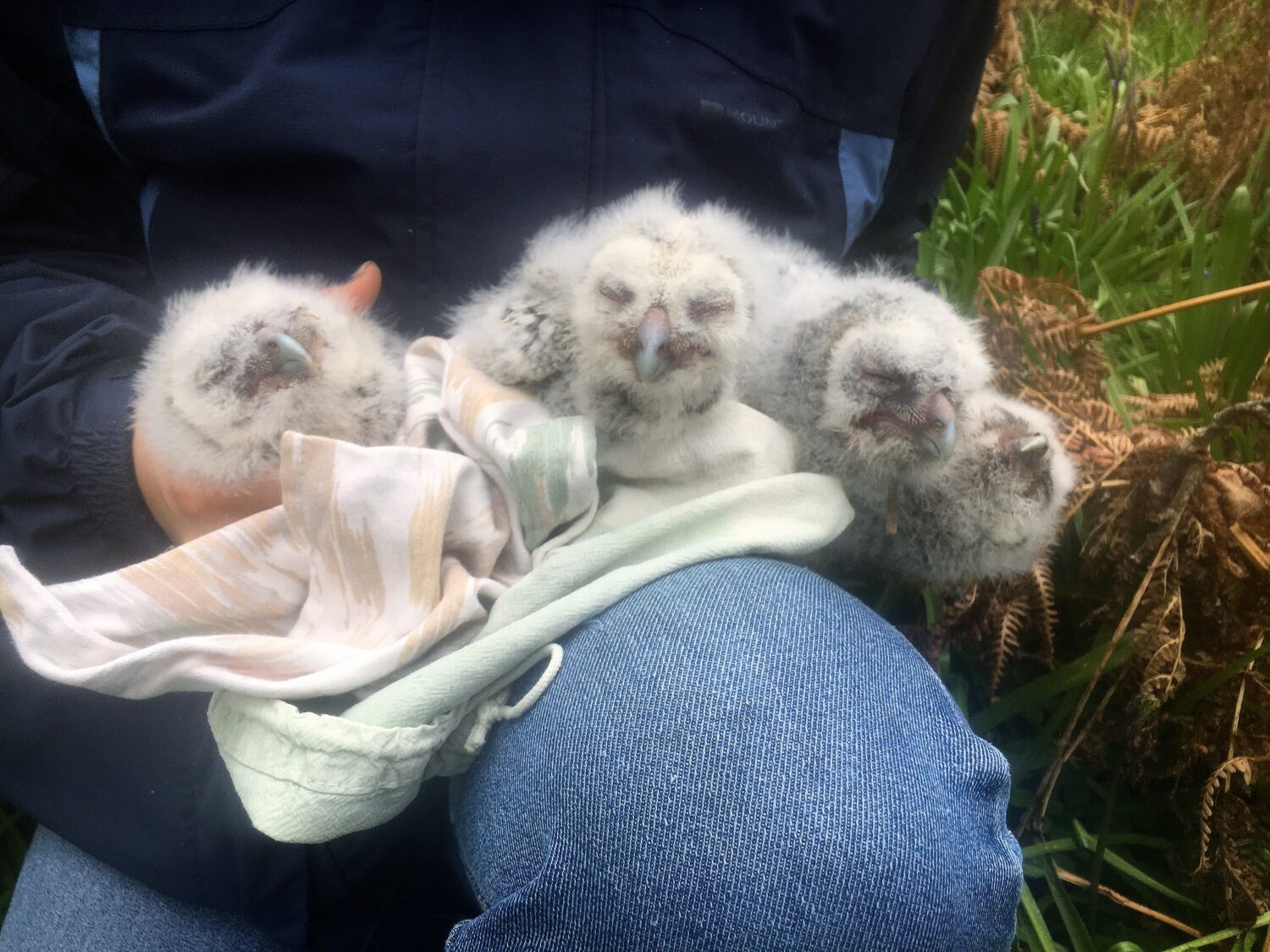North East Ornithologist, Phil Hanmer, summarises April’s bird ringing with an update on what the recent weather has meant for the potential breeding success of some of the birds.
Having been away to enjoy some of the wildlife of Cyprus at the end of March and beginning of April my colleagues Hilary & Caroline checked on the state of repair and occupancy of our Barn Owl boxes. Finding a pair of Barn Owls in a nest site at this time of year tends to indicate that they will nest early and have young before the end of May. On the other hand, finding single birds or no birds at all suggests that breeding will be later and be pushed back into June and July. What they found was more birds in boxes at the inland sites away from the coast (not the most usual finding). So, we are expecting that the inland birds will nest earlier while the more coastal birds will be slower and fewer in breeding. What was gratifying was to find a 6 year old male with a mate near Fontburn, a female also 6 yrs old (with a mate) near Netherwitton, a 7 yr. old male (with a much younger mate) near Longhorsley, a single male of 7 yrs. north of Wooler; and a 11 yr. old male (with a 5 yr. old female) near Warkworth. There was also a female (again with a mate) also near Warkworth of approximately 9 yrs. of age. We will not be checking on our barn owls again until the end of May and in June.
I have mentioned before how we used to have regular large passages of Siskins past our home near Lemmington Hall; as well as semi-resident nesting birds. The last time this was obvious was in 2019 but things have picked up a little this year with me capturing over 40 birds in March/April. Most recently the British Trust of Ornithology informed me that one of the siskins I had controlled on the 8th April (already ringed) had been ringed at Mansfield, Nottinghamshire in March 2022; while another I controlled on the same day had been ringed at Peebles in the Scottish Borders in May 2021. Along with birds that are clearly just passing through as they migrate north I have also recently encountered 8 female siskins with well-developed brood patches; indicating that they have returned to nest in the local vicinity.
Along with the siskins I have been ringing resident Goldfinches (not yet nesting), Robins (nesting) and returning migrants. These have included two Chiffchaff and a Blackcap (all warblers) on the 14/4/23. Most interesting was re-trapping another Chiffchaff (KNL649) on the 17/4/23 that I had originally ringed at home on the 26/4/21. I can surmise that this is a ‘local’ bird returning to its natal site.
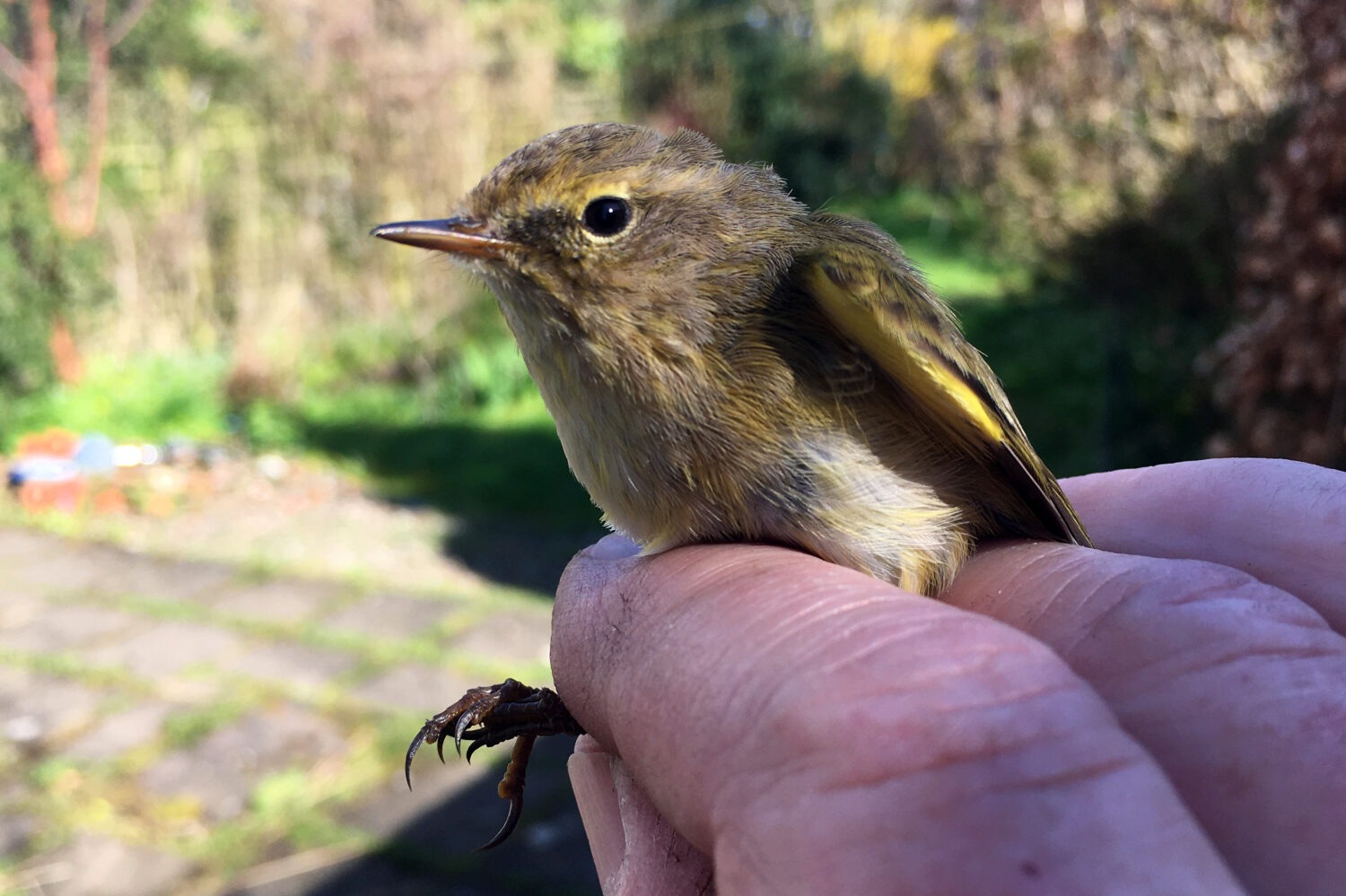
This time of year, I do a survey of the River Aln within Hulne Park for nesting Dippers. I am only occasionally able to ring any of the pulli dippers because the nests are in inaccessible places but nevertheless, I have a record going back quite a few years. This year there were four definite nests (down from the probable maximum of six) and Alison I were able to catch one adult and ring two pulli which by the time you read this are probably out of their nest and hunting caddisflies in the river.
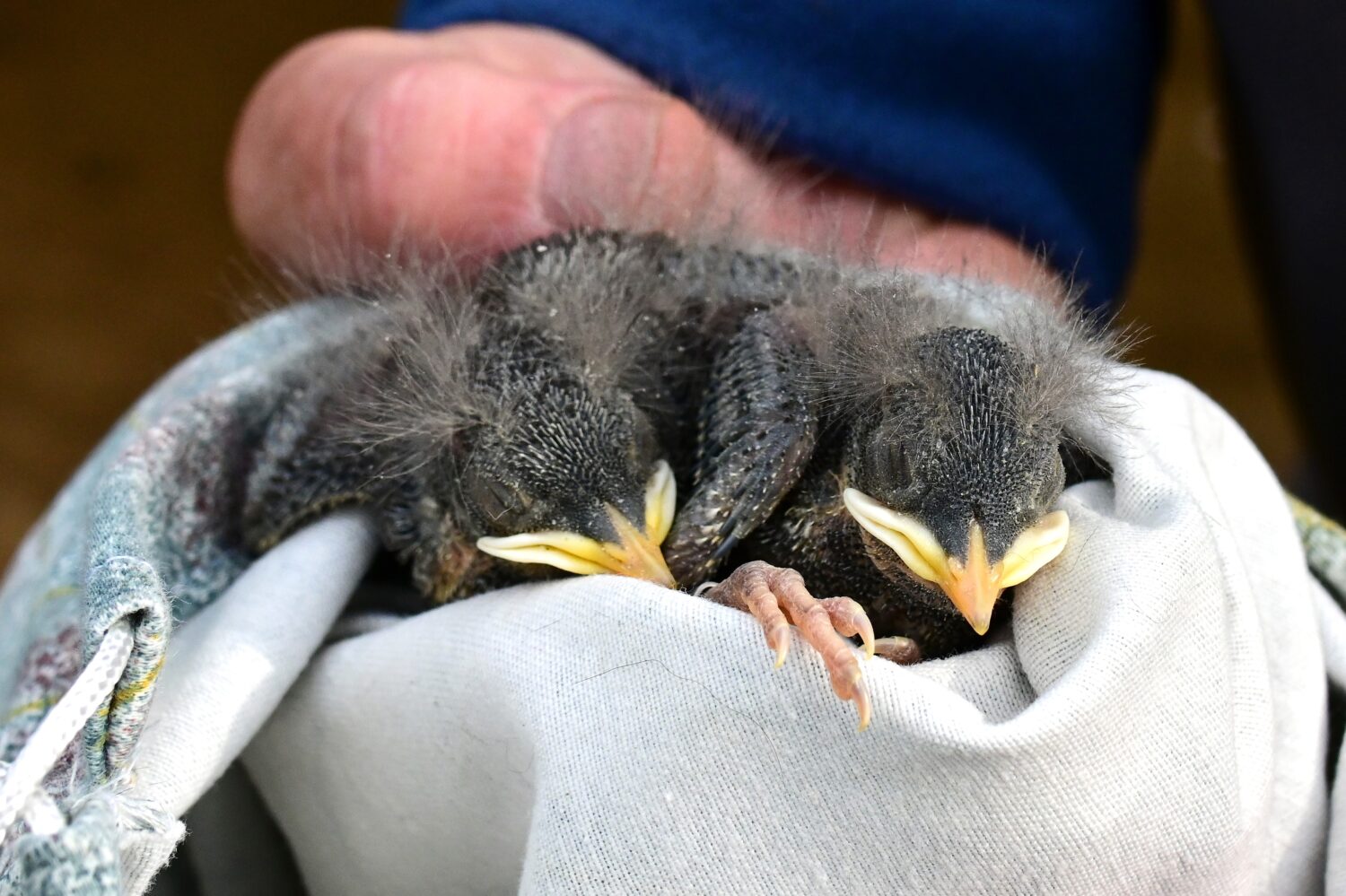
Hilary operates a ringing site on the edge of a wood near Longframlington and we did a session on the 26th which while not high in numbers was good on quality with tits, blackbirds, goldfinch, siskin and a beautiful male Yellowhammer; which had been originally ringed in 2021. It was interesting to note that we were not entirely certain that it was a male back then but this year the strength of the golden-yellow colouring made this a certainty. Hilary also captured a male Redstart (a migrant of course returning from Senegal or The Gambia) which will hopefully breed locally.
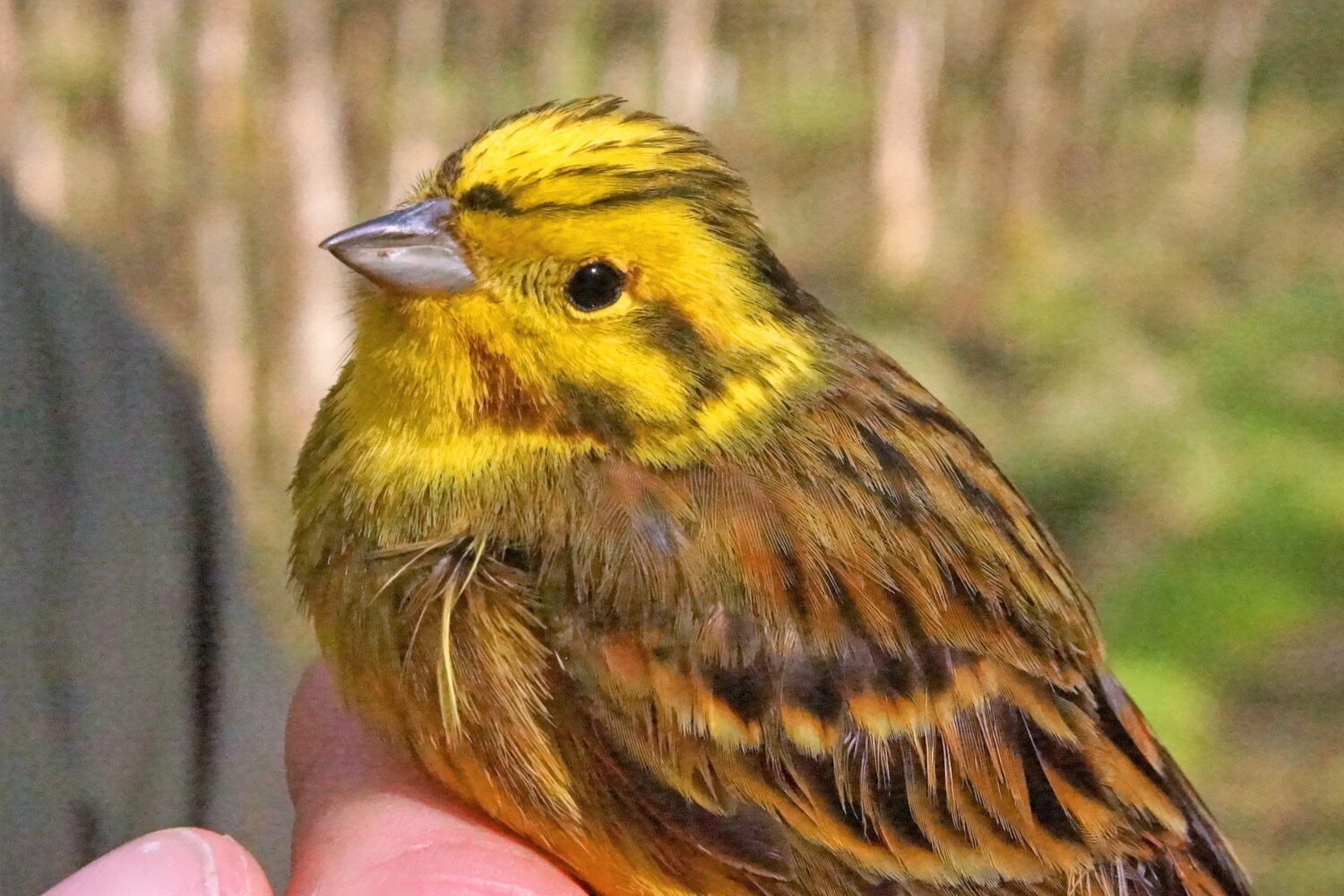
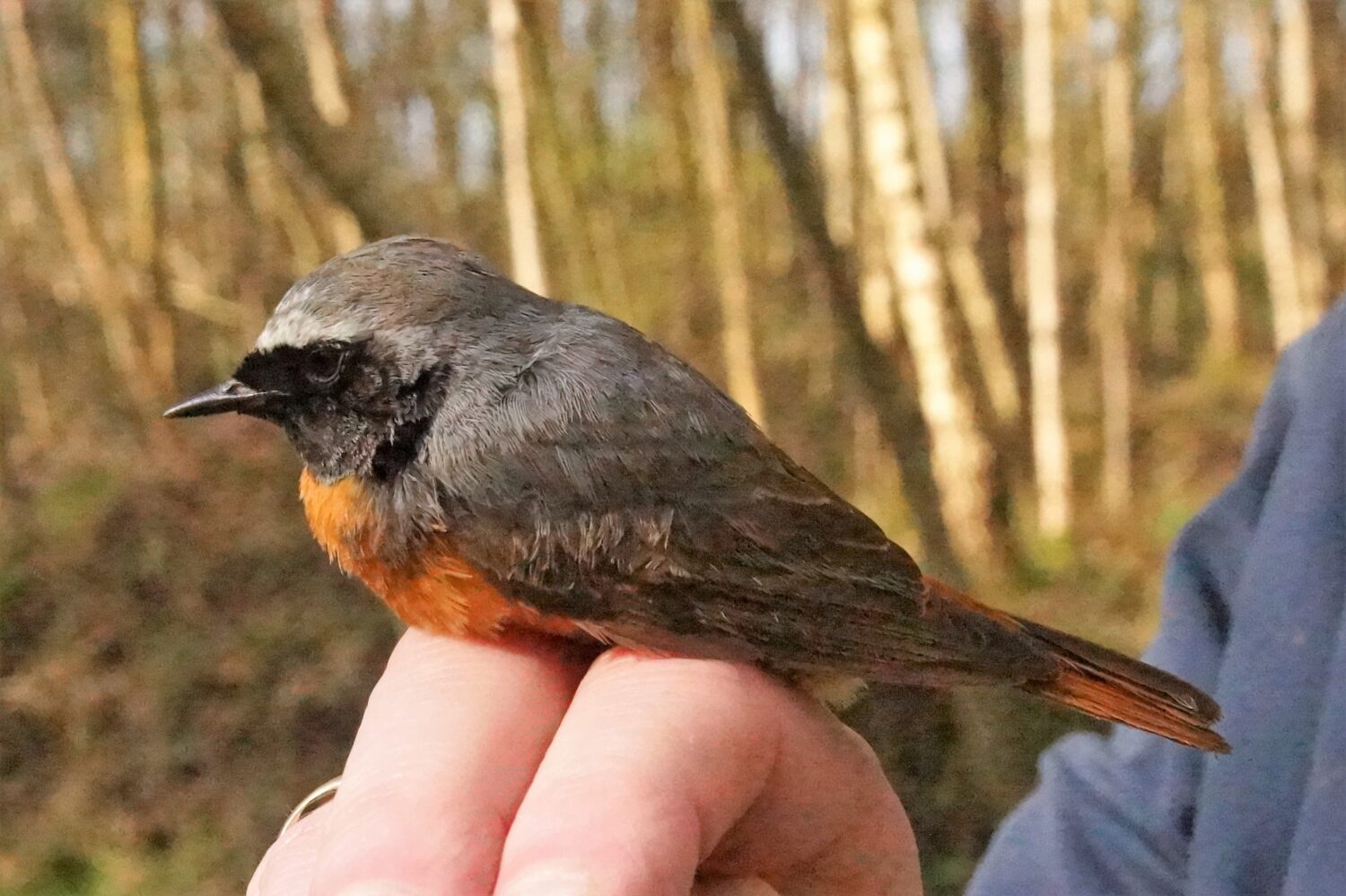
The most significant bird that nests this time of year is the Tawny Owl (much earlier than Barn Owls) and we have been checking our boxes for nesting owls and goldeneye ducks. Last year there were 14 nesting attempts (in 20 boxes) with 11 successful; this year it looks like there will be less which we can probably put this down to the very variable weather which has seen the temperature fall just when birds were incubating their eggs. We have also surprisingly discovered that one of last year’s successful sites (near Wingates) has been taken by a Mandarin Duck! So far we have ringed Tawny Owl broods of 4 north of Alnwick; 3 near Branton and 2 near Longframlington.
